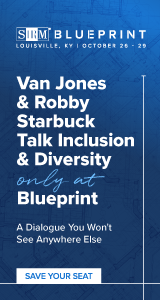How to Reduce Critical Management Gaps
When you review key manager job postings, you can appreciate the level of interaction and skill required of critical roles. At the same time, these employees must manage the most distracted, worried, stressed, and unhappy workforce. Gallup's 2023 State of the Global Workforce Report details the negative feelings in the workforce anecdotally conveyed in the news. Stress levels are at an all-time high with 71% of American workers saying it is a good time to find another job. This situation is exacerbated when there are management gaps, These gaps form when:
- Job openings last for longer periods of time, saddling senior managers with tactical functions, and forcing experienced employees to shoulder more responsibility and increasing feelings of burnout.
- With promotion of an internal candidate, the gap is the learning curve for the people skills, and higher collaboration, engagement, and networking responsibilities. Additionally, their previous position will need backfilled.
- With an external candidate hire, there is a gap represented by a broad-based learning curve and a whole lot of unknowns.
Critical manager vacancies are open for longer periods of time with many aspects unattended or not fully covered by existing staff. Throughout this process there are a myriad of issues that take longer to resolve and not only is there stifled progress, traction slips.This pressure will continue as Baby Boomers retire, Gen Z with little experience permeates the workforce, and we further navigate the transition to robotics and artificial intelligence. Transitioning to robotics is a particularly stressful time for manufacturers, and the execution of these large investments, and the culture change they trigger, is a further heavy burden on operations managers. As designed production output per line increases, the increase in potential lost or delayed revenue also increases. The market of candidates able and willing to manage these capital investments will only get tighter.
There are measures that can be taken to reduce the managerial gaps from open roles. With the right approach, you can dramatically improve your position within this shrinking market. Here are some actions you can take to reduce critical management gaps:
Focus on the needs of your current key managers. Figure out ways to give them support and alleviate stress at work. Confirm that everything they are doing is their responsibility, and not that of someone else. As gaps form in organizations, middle managers tend to become black holes for tasks and roles. If they become overloaded, and don't see a way out, they may start looking for another employer and leave. Observe their work environment directly. You may find out that what you believe is underperforming, is really an overload of roles, responsibilities, and functions. In worst case scenarios, which are more common than you think, get ready to hire 2-3 people to replace the quick exit of a high performing manager. Another great approach that can quantify managerial scope creep, is to print several job postings of several organizations, and related roles, and have the manager highlight everything they feel is their responsibility. This is a quick way to gain a good understanding of how far they are stretched.
Target training dollars in the most impactful ways. Map the interactions (formal and informal) of each position in your company. Who in the organization through their daily work has the most contact with others in support of the system? If you invest in these people with the intent of facilitating their interactions, your investment will have the most positive influence over the entire system. Greasing the wheels will reduce frustrations and increase overall engagement and job satisfaction. You will also help these highly connected employees increase their level of productivity, making their jobs easier, and each action more effective. Also very effective is to elevate and enhance the baseline performance and capacity of organization through engagement, collaboration, and problem-solving training. This creates action-minded self-directed teams that alleviate the demands of middle-managers. This approach also has an extra bonus of increasing employee engagement, which is a primary indicator of employee satisfaction.
Design-align your organization for directional success. Structure the organization to work toward a vision with actions that when repeated move you closer to your vision; this is your mission. Identify the capacities (systems of systems) and learning (including feedback loops) needed to support your vision and mission. Many organizations fail to identify primary capacity and lack the required power and learning to sustain progress. You will probably identify critical training for your team, and other learning needed to support capacity (e.g., project management, systems thinking, collaborative leadership, etc.). If you proactively address the training needs of your current staff, you may prevent an exit (and thus a gap from opening) in the future. At the same time, you will improve the efficiency and efficacy of your system to be successful.
Another specific action to reduce management gaps is to develop internal candidates. This is different than a succession plan. It involves nurturing, developing, and grooming high potential employees in front-line positions for elevated or s management roles (and requires you have presence to recognize this potential!). One local manufacturer developed a five-year development program for a machinist to become the shop foreman, who was retiring in that same timeframe. This plan included his orientation within the assets of the shop, other internal skills like understanding customers and ERP use, and managerial effectiveness skills like six sigma black belt, ISO, systems thinking, employee engagement, etc. Northeast Ohio is a tight market for machinists, who receive cold, high dollar offers over social media and job boards. By developing an engaging, exciting and learning journey, the trainee isn't being lured by high dollar offers to other plants with more resources. This is a great story to tell about professional growth paths within the company and gets a high demand machinist to stay home and contribute while the business developed an even better key manager.
Split the managerial requirements and functions into two or more positions, e.g., one for management and one for engagement. Engagement managers are starting to take hold in academia, and it is an interesting approach to a complex situation. Just as we have talent, excellence, safety, and quality managers, we are reaching a point in business where the demands for leadership require specialty in several areas. We will be ineffective, if we keep expecting a middle manager to manage complex processes like order fulfillment, attend often poorly run meetings for process and customer needs, operationalize robotics, supervise and develop employees, and distill and extract great ideas from the production group. This is only getting more complicated with the expectations of today's workers for personal attention and tailored engagement. As a side note, some organizations create engagement and share execution leadership through process governance like PMO (Project Management Office) or VDO (Value Delivery Office). If you don’t invest in the baseline skills of your overall employee population, consider a PMO, VDO or engagement manager.
Lastly, protect your position in the candidate market, by playing the waiting game and creating interim leadership positions filled with fractional leadership. This facilitates the acquisition of knowledge without increasing headcount. By contracting short-term expert leadership, businesses maintain momentum and prevent dragging CEOs into site strategic or operational responsibilities and direction. More companies are creating interim leadership to bridge gaps while the recruiting projects and programs look for the ideal candidate. This approach gives the team the leadership resources they deserve and need, to be successful.
With strong action organizations can address the issues that result in management gaps, reducing their frequency, lifecycle, and impact.
Lori G. Fisher, PMP, PCHRA Social Media Chair





